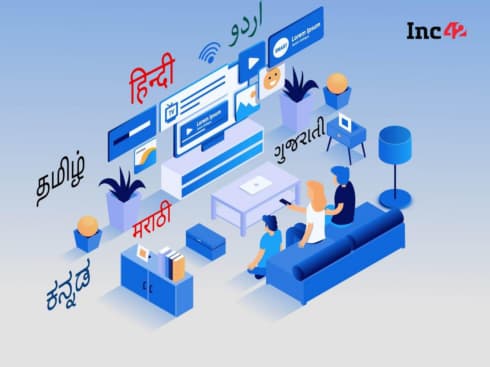
Developed by C-DoT, the Sanchar Saathi portal allows citizens to block stolen phones or report fraudulent connections
Sanchar Saathi’s TAFCOP module enables users to verify all the mobile connections taken under their respective names
As per government estimates, 40 Lakh fraudulent SIM cards have been identified so far, of which more than 36 Lakh connections have been disconnected
Home to more than 102 Cr active wireless subscribers at the end of February 2023, India is the world’s second-largest telecom ecosystem in the world. The rising tide of the internet and smartphone penetration has spurred the country’s digital economy and opened a whole new world for Indians via the internet and cheap telephony.
Besides calling, a whole gamut of banking, healthcare, edtech and government services have come to the fore for Indians. While benefits are aplenty, malicious actors have also used this opportunity to swindle and lure the gullible general populace.
Lately, there have been instances galore of a new wave of online frauds, such as identity theft, banking frauds and forged know-your-customer (KYC) documents. This is besides the regular run-of-the-mill offences, such as counterfeit smartphones and duplicate SIM cards issued without consent, that largely go unreported.
The final nail in the coffin seemed to be the wave of frauds involving international numbers on WhatsApp that grabbed eyeballs a few days ago. Close on the heels of that, the Department of Telecom (DoT) unveiled a slew of citizen-centric services to protect Indian mobile phone users.
At a public event on Tuesday (May 16), Union minister for communications Ashwini Vaishnaw launched the Sanchar Saathi portal to enable citizens to avail a slew of services ranging from blocking stolen or lost phones to reporting fraudulent connections.
The portal has been designed in-house by the telecom department’s technology development arm, C-DoT, and has four major modules at the heart of it. These modules include:
- Centralised Equipment Identity Register (CEIR)
- Know Your Mobile
- Telecom Analytics for Fraud Management and Consumer Protection (TAFCOP)
- Artificial Intelligence and Facial Recognition powered Solution for Telecom SIM Subscriber Verification (ASTR)
New Sheriff In Town?
With user safety at the core of the new portal, citizens can now log on to the Sanchar Saathi website to ascertain how many connections are registered under their name or to check the genuineness of the IMEI.
Each leg of the Sanchar Saathi initiative has been tasked with a certain objective. The first major constituent of the portal is CEIR, which allows users to report a stolen or lost mobile device using just the IMEI number, along with a copy of the police complaint.
Integrated with systems of telecom operators and law enforcement agencies, CEIR first verifies the police complaint and, subsequently, blocks the stolen mobile phones from being used on Indian networks. However, if a person tries to use the stolen phone, CEIR allows enforcement agencies to track the device, preventing the misuse of stolen data in stolen or lost mobile phones.
A user can, however, unlock the device on the portal itself upon the recovery of the stolen device. The platform has also been designed to enable users to flag inaccurate or forged IMEIs hosted on Indian networks.
Then, there is the ‘Know Your Mobile’ module, which simply allows the general public to check the genuineness of the IMEI number of their mobile phones.
Another major module of the Sanchar Saathi portal is TAFCOP, which has blown into popularity online on social media. TAFCOP enables users to verify all the mobile connections taken under their respective names.
Users can simply check all the SIM connections issued using their identity documents such as Aadhaar and passport, among others. Afterwards, the users also have the option to block connections issued without their consent by raising a request with the TAFCOP system.
This triggers a re-verification process and if the user fails the authentication mandates, the connection is then terminated. As per government estimates, more than 40 Lakh fraudulent connections have been identified so far, of which more than 36 Lakh such connections have been disconnected.
AI Steals The Show
The telecom department has developed an AI tool to identify SIM cards issued on forged documents.
The ASTR module on the website uses facial recognition and data analytics to detect instances where people used fake documents to get their hands on hundreds of valid SIM cards. In the first phase, more than 87 Cr mobile connections were analysed and the data was processed on the indigenous Param-Sidhhi supercomputer.
In the ensuing crackdown, multiple cases were detected where a single photo was used to obtain hundreds of connections, and more than 40.87 Lakh suspected mobile connections were identified.
Subsequently, of these, 36.61 Lakh connections were disconnected while the rest are being verified. Besides, 150 FIRs have been lodged in connection with the case and 40,123 Point of Sales (PoS) outlets have been blacklisted by telcos.
Authorities have also shared details of such disconnected connections with stakeholders such as banks, payment wallets and social media platforms to flag accounts associated with such numbers.
The new portal comes close on the heels of sweeping legislative reforms undertaken by the union government in the telecom circle. In recent months, the Centre has unveiled the draft Indian Telecommunication Bill, 2022, which claims to replace the century-old and colonial-era Indian Telegraph Act, 1885, and the Indian Wireless Telegraphy Act, 1933, among others.
The move to undertake these changes comes amid an uptick in cases of fraud and scams in the digital domain. Earlier this month, WhatsApp users across the length and breadth of the country complained about incessant spam calls, which prompted WhatsApp to announce that it would undertake a full-scale sweep to remove such numbers.
With matters expected to take a turn for the worse as more and more Indians join the digital brigade, the onus now lies on both the users and the government to ensure that safety and security remain the bedrock of telecommunications.































 Ad-lite browsing experience
Ad-lite browsing experience